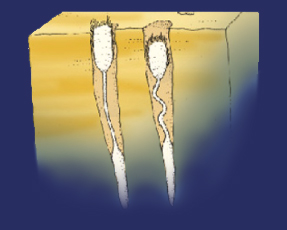| Inarticulate Brachiopods

These are primitive brachiopods that do not possess teeth and sockets and their valves are held together by muscles without a hinge. Their shells are made of phosphate and organic chitin. Inarticulates were common in the Cambrian, but declined in the Ordovician as the articulate brachiopods took over.
The earliest inarticulate brachiopods were the Lingulides which appeared during the Early Cambrian ca. 540 Ma ago. They are best known from the common living genus Lingula, which lives buried in seafloor sediments using its long pedicle to dig a burrow. They have remained virtually unchanged since the Cambrian and can even be found today in areas around Tolo Channel in Hong Kong (Lingula anatina). |













